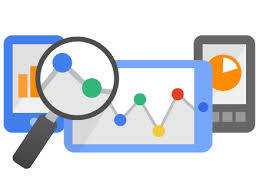Sometimes the hardest part about implementing Sales and Operations Planning (or any project) is just getting started.
Sometimes the hardest part about implementing Sales and Operations Planning (or any project) is just getting started.
A few weeks ago I was thinking about conversations I’ve been having with clients in the early stages of implementing an S&OP strategy. They were relying on a phased approach, they knew that they needed an integrated set of business processes to go with their newly purchased technology. They understood that the focus needed to be on information, not just the volumes of data they had at hand. They knew that in order to implement a successful S&OP they needed clean, current, and accurate data. As with many organization, time and effort was being wasted gathering data that had minimal importance to the overall project. But in this case, senior leadership was able to articulate the business problem they were trying to solve, and were able to help define, with some difficulty mind you, the minimum data necessary for the project.
 It all sounds wonderful on paper, and we were destine for success! But, like other businesses their attempts to implement S&OP were frustrated by internal tensions between departments. What followed was this seemingly innocent statement on my part: “Not everyone will be a convert immediately, so we watch for resistance and address it as part of our strategy. Push, but not too hard, or we will get resistance.”
It all sounds wonderful on paper, and we were destine for success! But, like other businesses their attempts to implement S&OP were frustrated by internal tensions between departments. What followed was this seemingly innocent statement on my part: “Not everyone will be a convert immediately, so we watch for resistance and address it as part of our strategy. Push, but not too hard, or we will get resistance.”
And that’s when the fireworks started. Or to be precise, my somewhat nonchalant mention of possible resistance sparked some great comments and questions.
Classic best practice suggests that S&OP must “belong” to the Chief Executive Officer. If that’s not possible then a strong united coalition of department heads may be able to lead the process if they set clear ground rules and boundaries for working together. In this case, we had senior management buy in and support, but what we really needed was their “ownership” of the project.
Some amount of resistance is inevitable, and it usually boils down to cultural/people issues, not in any way exclusive to SO&P implementations, but let’s go ahead and tackle them in the context of a SO&P project. Here they are:
The Internal Obstructionist — This is the presence of a few highly-regarded and influential employees who either passively or actively undermine the changes in behavior that the new initiative requires. You know you have this problem if the water-cooler conversation sounds something like this: “That new BI program won’t work for us…”, “We’ve always done it this way…”, and “That new initiative will make us have to change.” (Basically anything eluding to “change is bad.”)
The Dirty-Data Diversion — This is the belief that there’s no use starting a BI implementation until the company’s data is polished, scrubbed, cleaned, pressed and folded to perfection. It’s the same argument some use to avoid going to the gym: I got to get in shape first!
I’ll address the Internal Obstructionist in a future post. Today, let’s grapple with #2.
The evil genius of the dirty-data roadblock is its apparent logic and deceptive concern for company well-being. In a BI context, artful proponents of this argument actually appear to have the best interests of the company in mind. We don’t want the C-suite making decisions based on bad data; that’s bad for all of us. Let’s get it cleaned up first.
Of course what’s really at work here is what Seth Godin calls the assertiveness of the lizard brain. AKA the resistance, AKA fear. No one wants the bright light pointed at his bad data or poor processes.
And since no data-scrubbing project has ever succeeded, there’s little risk in promising a thorough clean-up as a prelude to a SO&P kick-off. That’s the diversion. Confucius might say it like this: “If you think you need to finish before you can begin, you will never begin.”
Here’s how to overcome this type of resistance in three steps:
1. Inject some honesty
Everyone knows there are data quality issues. Yes, even management knows. In fact, they’ve known for a long time. That’s not news. The point is to work together to improve the speed and decision-making ability of the enterprise, not place blame. This gives everyone who needs it some “cover,” and puts the lizard back in its cage.
2. As soon as possible start reviewing some basic KPIs in the new SO&P system
Embrace the fact that the data isn’t where it needs to be. Make reliable data part of the project, not a prerequisite. Doing this will help everyone envision the desired future and will set the stage for some quick wins. And quick wins will unleash the dynamic duo of momentum and optimism. The system should be viewed as a catalyst for operational improvement, not a tyrant that demands operational perfection to function.
3. Meet often, especially in the beginning
In fact, consider daily meetings. More importantly, set overall priorities in a way that gives the team the time and the freedom they need to make progress between meetings. This helps reinforce everyone’s commitment to a successful outcome. In every meeting talk about how awesome life will be when the system is trusted and providing accurate information.
Nike got it right with its slogan “Just do it.” Starting has its own virtues.







